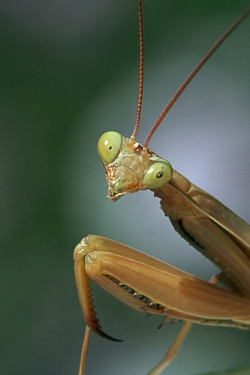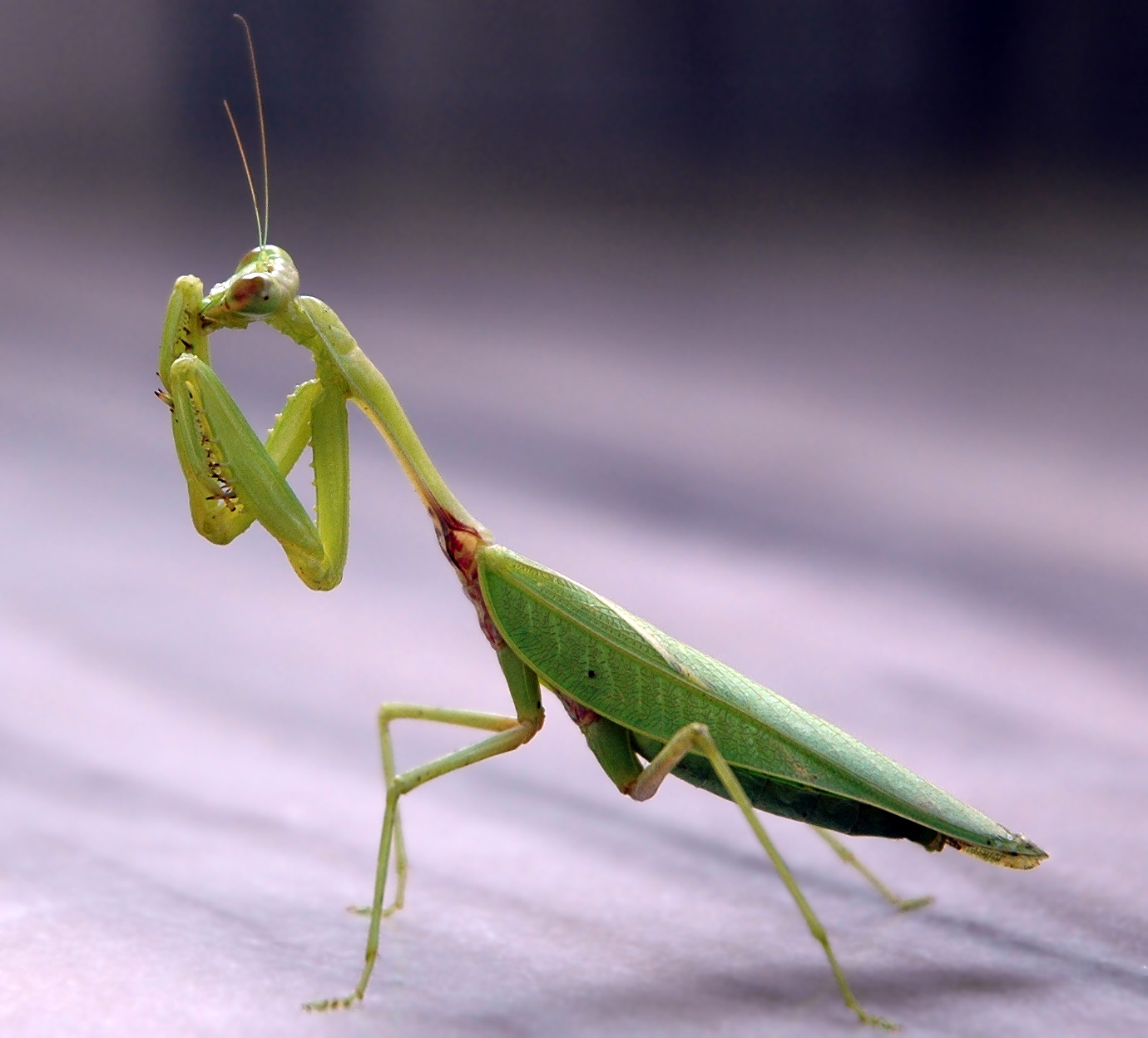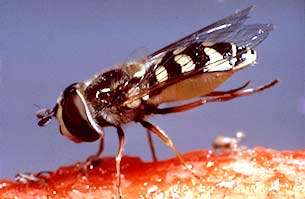The Praying Mantis
 |
Robust and Lethal: the Mantis eats whatever it wants to!The praying mantis is an aggressive predator that uses stealth combined with an accurate and lightning fast strike to capture prey. It is also known as the preying mantis which refers to its biology, not its pose of supplication. These fascinating mantids are not very effective as pest control agents in gardens or landscapes. They may eat common plant pests when they are small, but they soon move on to larger prey that may or may not be important pests. For this reason we do not recommend them for pest control, but they do make an interesting addition to the garden. Egg cases for the mantids we sell contain 50 to 400 eggs with an average of around 200 and may take several weeks to hatch after receipt. The young hatchlings are quite active and will quickly disperse away from the egg case. They are commonly seen on the tops or outer edges of plants near the release site for the first few days after hatching.Kids are fascinated by the freshly hatched nymphs, which look like miniature versions of the adults, complete with the characteristic pose. |
 |
Biology of the MantisIf you want to be able to see them up close, place the egg cases in a glass jar, a terrarium, or an empty aquarium. Put this container in a warm place where you spend time every day, but not where it receives direct sunlight. Make sure to check it daily until they hatch. Since the mantids are cannibalistic, it is best to release them shortly after hatching, but if you want to raise a few, keep 3 or 4 in the container and add some objects to give the baby mantids some hiding places. You can feed them aphids and fruit flies or use a butterfly net to collect insects from nearby meadows, though among these will undoubtedly be some other predators which may attack the baby mantids. As they grow they need to be placed in seperate containers or eventually you will have only one. The lifecycle of the praying mantis includes the egg, several nymphal stages, and the adult. They only have 1 generation per year. |

